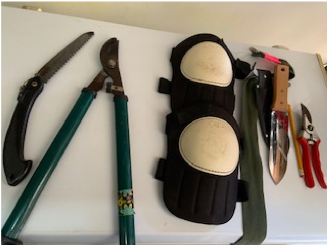Smart Gardening Means Safe Gardening
go.ncsu.edu/readext?681024
en Español / em Português
El inglés es el idioma de control de esta página. En la medida en que haya algún conflicto entre la traducción al inglés y la traducción, el inglés prevalece.
Al hacer clic en el enlace de traducción se activa un servicio de traducción gratuito para convertir la página al español. Al igual que con cualquier traducción por Internet, la conversión no es sensible al contexto y puede que no traduzca el texto en su significado original. NC State Extension no garantiza la exactitud del texto traducido. Por favor, tenga en cuenta que algunas aplicaciones y/o servicios pueden no funcionar como se espera cuando se traducen.
Português
Inglês é o idioma de controle desta página. Na medida que haja algum conflito entre o texto original em Inglês e a tradução, o Inglês prevalece.
Ao clicar no link de tradução, um serviço gratuito de tradução será ativado para converter a página para o Português. Como em qualquer tradução pela internet, a conversão não é sensivel ao contexto e pode não ocorrer a tradução para o significado orginal. O serviço de Extensão da Carolina do Norte (NC State Extension) não garante a exatidão do texto traduzido. Por favor, observe que algumas funções ou serviços podem não funcionar como esperado após a tradução.
English
English is the controlling language of this page. To the extent there is any conflict between the English text and the translation, English controls.
Clicking on the translation link activates a free translation service to convert the page to Spanish. As with any Internet translation, the conversion is not context-sensitive and may not translate the text to its original meaning. NC State Extension does not guarantee the accuracy of the translated text. Please note that some applications and/or services may not function as expected when translated.
Collapse ▲Our gardens can be our refuge. When we connect with the natural world through our gardens we benefit mentally as well as physically. For a lot of us, we’re staying home for a while to get past the danger that the COVID-19 virus presents. It’s a good time to enjoy the outdoors and satisfy that passion for growing things. But all that planting, digging, watering and pruning can be a workout for the body, and so practicing good garden ergonomics and properly using the right tools for the job can keep you injury-free and enjoying all that the garden has to offer.
As any gardener knows, left unattended the plants we would rather not have around take over the ones we do. We typically call them weed plants – annuals, perennials, shrubs or trees that have taken up residency where we don’t want them qualify.
Using the right tool for the job can make dispatching these invaders if not exactly a joyful exercise, then at least not a painful one. On the other hand, NOT using the right tool can actually result in it being not only a frustrating exercise but perhaps a painful one as well causing damage to your tools and possibly to you as well.
When pruning is needed hand pruners are best used for twigs, stems and branches about the size of large marker- ¾ in in diameter. If we try to cut too much wood between the blades, we can force the blades to bed and gap, rendering the tool ready for the trash and possibly hurting your hands or wrists. Branches from 3/4 to 1 1/2 inches in diameter can be effectively cut with lopping shears which are also excellent for pruning difficult-to-reach places. Use a tri-edged bladed pruning saw on branches larger than 1 3/4 inches in diameter. These saws make the cut on the pull stroke instead of the push making the motion easier to control.
Keep tools close at hand. Using a small tote, you can easily bring all the hand tools you need as you move among your plants, saving you multiple trips across the yard. I use fluorescent or other colorful coding/duct tape to mark my tools because then they are “Mom’s Stuff” and I also can find them more easily when I absent mindedly lay them down somewhere.
Often time in the garden means time on your knees. A good pair of cushioned and reinforced knee pads or a kneeling pad just make good sense. There are loads of bending and lifting (pun intended) in the garden, so be sure to bend with your knees and not from the waist and avoid twisting. Try to face the task at hand squarely so as not to strain your back and spine. Lower back pain, whether caused by muscle aches or a herniated disk, can make gardening a difficult task. Protecting your knees and back are essential if you’re going to be effective for the long haul (pun intended, again).
knees and not from the waist and avoid twisting. Try to face the task at hand squarely so as not to strain your back and spine. Lower back pain, whether caused by muscle aches or a herniated disk, can make gardening a difficult task. Protecting your knees and back are essential if you’re going to be effective for the long haul (pun intended, again).
Switch up your gardening activities every 20 minutes – or take a well-earned walkabout break, to use different parts of your body and switch muscle groups. Alternate between heavy, physically tasking chores, and those that are light and repetitive. You can find out more about protecting your knees and back in this publication from our friends at Virginia Cooperative Extension.
Check out these garden warm-up videos before you head outside to tame the verge: Michigan State’s Gardening Functional Five. If you are looking for something to do outside with the family check out our Citizen Science In Action: Pollinators Project on our Facebook page.




